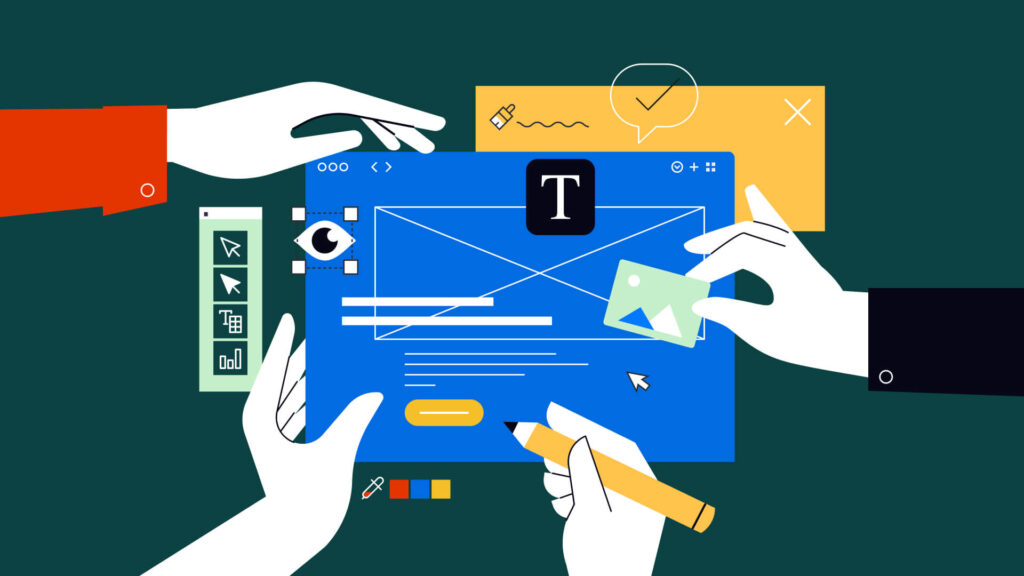AI-powered chatbots are becoming increasingly popular in the world of marketing
These chatbots, designed to simulate human conversation through natural language processing and machine learning algorithms, can be a powerful tool for businesses looking to automate customer interactions and improve efficiency.
Naturally, though, there’s concern that they may compromise authenticity and harm customer trust.
But, with the rise of generative AI, there is a way to leverage this technology in marketing without sacrificing brand.
In this article, we’ll explore how to effectively use generative AI tools for marketing strategy while maintaining credibility and brand voice – AKA, a human touch.
Benefits of using generative AI in marketing
Generative AI – “capable of generating text, images, or other media in response to prompts” – has found itself firmly on the radar of marketers the world over.
According to a study from Performance Marketing World, 59% of respondents said they fear they lack the knowledge needed to capitalize on it, despite almost three-quarters of them planning to incorporate the tech, and a huge 93% of them claiming they believe it will help them do their job.
So what benefits are people seeing, that’s making them want to dive in?
- 24/7 availability
For starters, generative AI technology never clocks off at the end of the day. The tech and the tools are on hand, ready to generate whatever you can dream up at the drop of a hat. That’s pretty efficient.
- Cost-effective
Many of the top generative AI tools for marketing (and beyond) come with a modest fee, meaning marketers can leverage vast amounts of resources without denting the budget. The Performance Marketing World study showed that 67% of marketers are prepared to assign up to 30% of their budgets towards the technology. The cost of an annual subscription is marginally less than the cost of hiring full-time staff – an enticing appeal in a pinch.
- Scalable
Using generative AI technology to produce copy, assets or anything else needed for marketing means you can easily adjust the output, by tweaking the input. Need more words? Ask the AI to write more words. Missing one last social media graphic? Use the AI to churn out an additional asset in mere minutes.
Generative AI in action
For marketing campaign design tips, here’s an example of a company that has successfully implemented AI in its marketing strategy: Heinz.
Using entirely AI-generated images, the brand, in collaboration with agency Rethink Ideas, launched its ‘It has to be Heinz’ campaign with incredible results.
They claimed to prompt AI platform DALL-E 2 using only the word ‘ketchup’ (not Heinz) followed by a series of design-led directions such as “ketchup space” and “ketchup renaissance.”
The results were that no matter how they prompted the AI, the generated image looked remarkably similar to the unmistakable labeling of the ketchup leader. This means the brand could leverage its awareness and association with the tomato sauce with the tagline “This is what ‘ketchup’ looks like to AI.”, further cementing its message that yes, it has to be Heinz.
Maintaining authenticity, credibility, and brand
As cool as all of this technology is, tread carefully. Simply relying on generative AI tools alone risks losing the most vital thing a company needs to succeed: brand identity.
To build and scale any brand, it’s important to establish, and then maintain, authenticity, credibility and brand voice at all times to build trust and awareness with potential customers.
If you’re known for your cheeky and provocative brand voice and then release a campaign that sounds robotic and corporate, people will see right through it and your reputation will take a hit.
It’s essential that you establish guidelines before allowing the technology to generate too much work for you.
Here are some tips to ensure that AI aligns with your brand’s personality and values:
- Understand the prompts.
The quality of the output depends on the quality of the input. Spend some time tweaking and re-prompting to get what you need at the level of standard you need it.
- Tell the AI what you stand for.
Use the prompts to teach the AI about your brand identity, so that it uses that information to generate the asset.
- Edit. Edit. Edit.
Don’t simply copy and paste (especially for copy-generating AI) the outcome and call it a day. That’s the quickest way to lose your essence and customers can spot it a mile off. Take the response as inspiration or research, and re-work or edit the outcome to ensure it follows your brand guidelines.
Best practices for using AI in marketing
If you’re keen to test out these new tools in your next marketing campaign, keep these best practices in mind:
- Establish your goals and set clear expectations
What do you want to achieve? Whether it’s improving lead generation, enhancing customer experience, optimizing content creation, or streamlining data analysis, having well-defined goals ensures more focused (and effective) implementation.
- Identify your data sources
AI algorithms thrive on data, so what you plug into them matters. Identify the key data sources that are most relevant to your marketing goals, such as customer behavior data, social media insights, website analytics, or CRM data. Ensure that the data is accurate, up-to-date, and well-structured to achieve optimal results.
- Provide human oversight
As tempting as it can be to let the AI do the work, human intervention will remain essential in order to not lose that authenticity and brand personality. Always aim to add the finishing touches necessary to keep true to your brand.
- Implement personalization at scale:
One of the greatest advantages of AI in marketing is its ability to deliver personalized experiences at scale. Leverage AI algorithms to analyze large volumes of customer data and gain valuable insights into individual preferences, behaviors, and interests. Then use these insights to tailor your marketing messages, content, and offers to create highly personalized interactions with your audience. This tactic will help you create relevant and timely experiences so you can foster stronger connections, drive engagement, and boost conversions.
- Continue to learn and adapt
Much like the AI itself, marketers using them need to be able to analyze, react and adapt. Continue to assess the performance of your AI-powered marketing initiatives by tracking key metrics and evaluating their impact on your goals.
Enjoy generative AI, but stay true to your brand
As with any new tools, generative AI can be a friend or foe, depending on how you use it.
When implemented properly, with strategy and caution, it is possible to leverage AI to your marketing advantage without losing authenticity, credibility, or all-important brand. Test them out, revise and refine, but make sure to refer to your brand guidelines and stick to your values at all times.
If you’re looking for support (or a skilled design team to put your brand guidelines into a beautifully designed resource) get in touch to outsource design or book a free demo today. Our flexible subscription gives you the option to scale up or scale down production as and when you need to.



